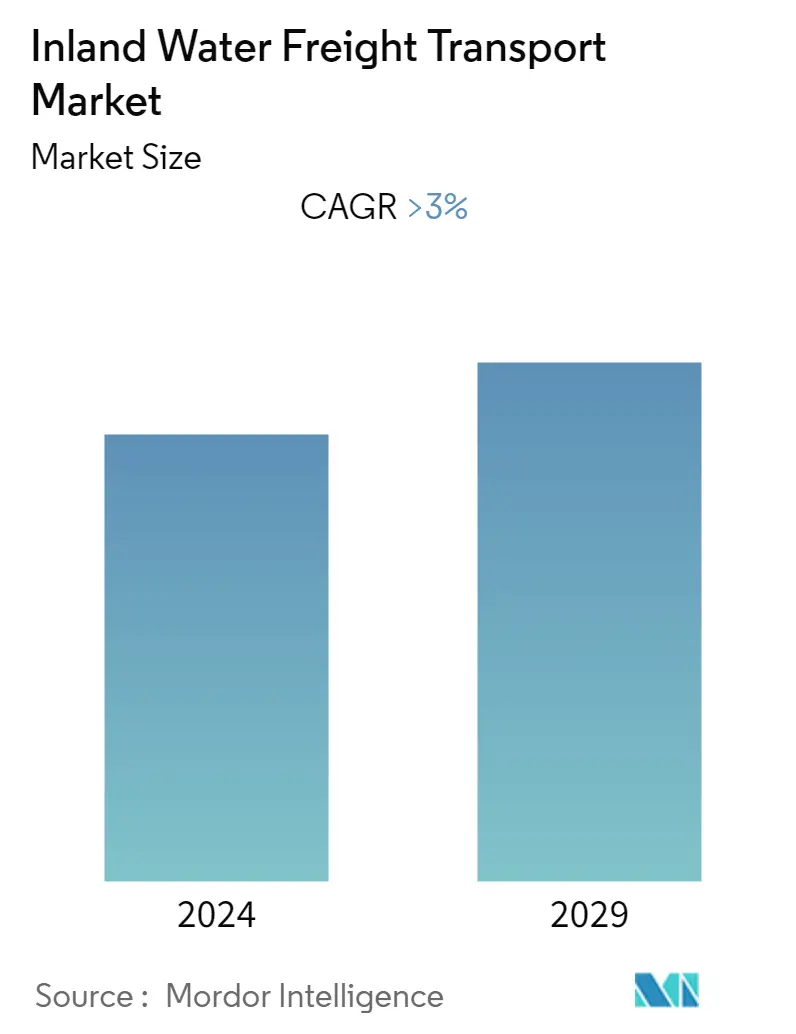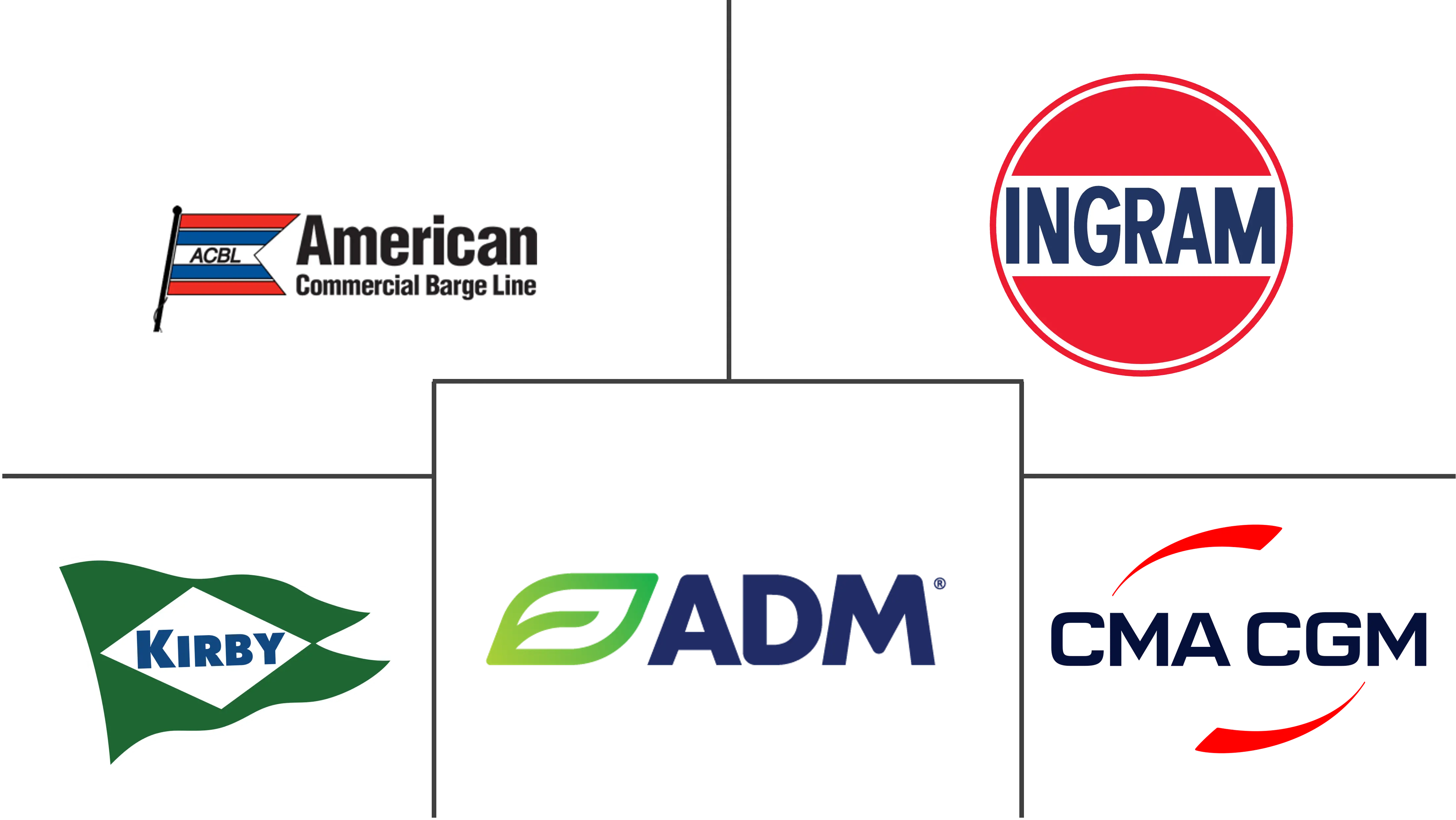Market Size of Inland Water Freight Transport Industry

| Study Period | 2020 - 2029 |
| Base Year For Estimation | 2023 |
| CAGR | > 3.00 % |
| Fastest Growing Market | Asia-Pacific |
| Largest Market | Europe |
| Market Concentration | Low |
Major Players
*Disclaimer: Major Players sorted in no particular order |
Need a report that reflects how COVID-19 has impacted this market and its growth?
Inland Water Freight Transport Market Analysis
The size of Inland Water Freight Transport market is USD 13.25 billion in the current year and is anticipated to register a CAGR of over 3% during the forecast period
- The inland water freight transportation market comprises companies (organizations, sole proprietors, and partnerships) that offer inland water freight transportation of cargo on lakes, rivers, or Intracoastal waterways. Only items and services that are exchanged between parties or sold to final customers are covered.
- The market for inland water freight transport has been primarily driven by the need for reasonable cargo transportation. Because of the discrepancy in fare pricing compared to other means of shipping, water freight is typically regarded as affordable and economical for heavy items. The cubic meter of the typical container is frequently used to determine the rate of water transportation. In contrast, the charged weight for air transportation is determined by taking into account both the size and weight of the cargo.
- An growing trend in the inland water freight transport business is the creation of information technology platforms for better vessel management. According to the United Nations Conference on Trade and Development (UNCTAD), in 2019, with a fleet of 95402 ships, nearly 80% of world trade was handled via waterways. Information technology is utilized on ships for customer relationship management, warehouse management, queuing systems, fuel optimization, monitoring vessel performance, and document recognition from scanned copies and images. BunkerEx, an online resource that assists ship owners in locating the best bunker ports, and Nautilus Labs, which uses data from sensors, manual reports, and market information to create a unified fleet intelligence, are two notable examples of online tools and portals used for operations management on ships.
- The market for inland water freight transport is anticipated to be hampered during the term due to the impact that crude oil price volatility is having on the water transportation industry. Fuel oil, which provides 95% of the energy used in worldwide transportation, is a significant source of powering the global economy, according to the United Nations Conference on Trade and Development. Increased fuel prices lead to product inflation and have an impact on all facets of product transportation. When fuel prices decline, consumers can purchase items for less, and logistics companies can utilize the money they save to enhance their operations. Operational costs are directly affected by variations in fuel prices.
- Although the COVID-19 epidemic affected marine travel, the effects were not as severe as first anticipated. Maritime trade decreased by 3.8% in 2020 as a result of the shock in the first half of the year. However, there was a tentative, though asymmetrical, recovery in the second half of the year, and by the third quarter, volumes had restored for both containerized trade and dry bulk commodities.
